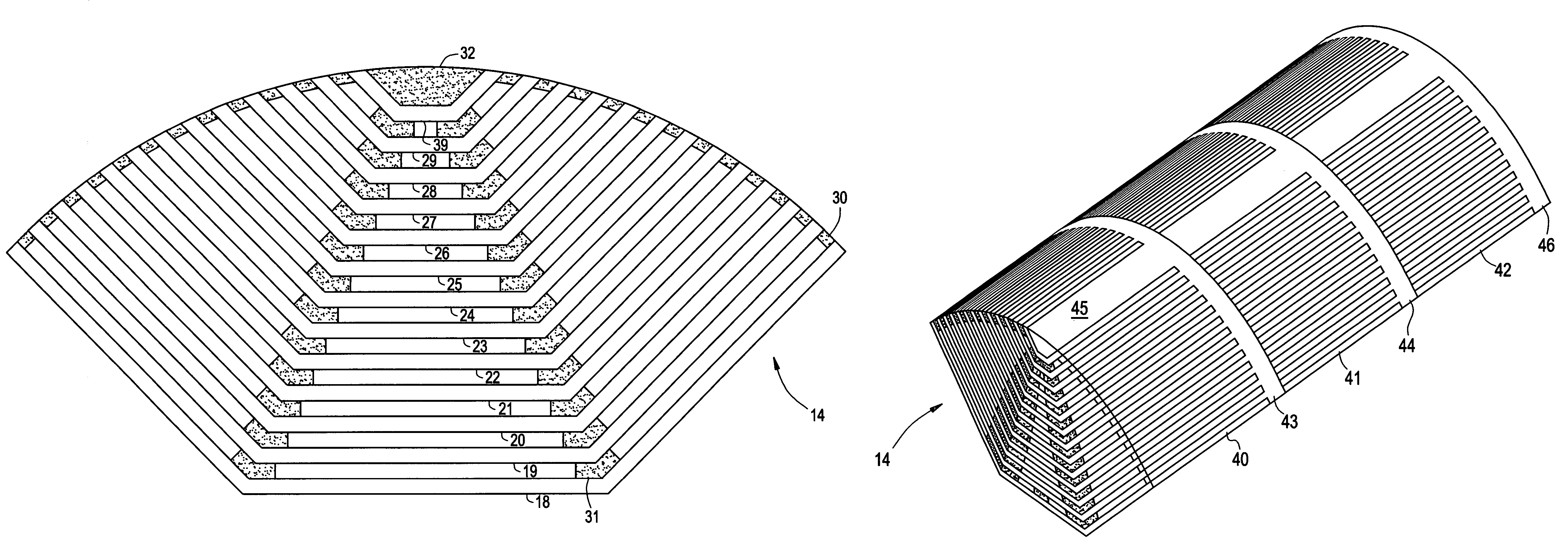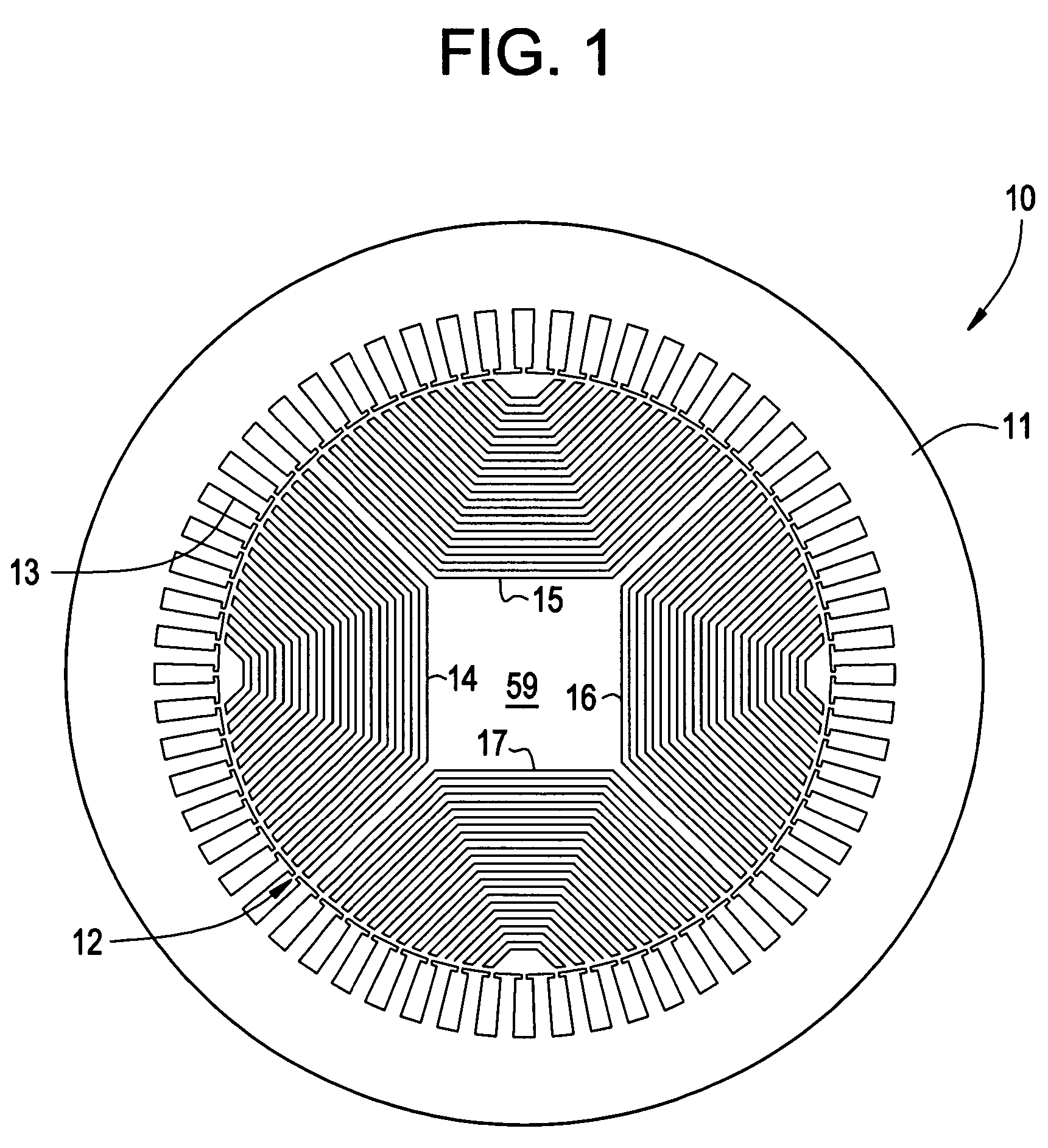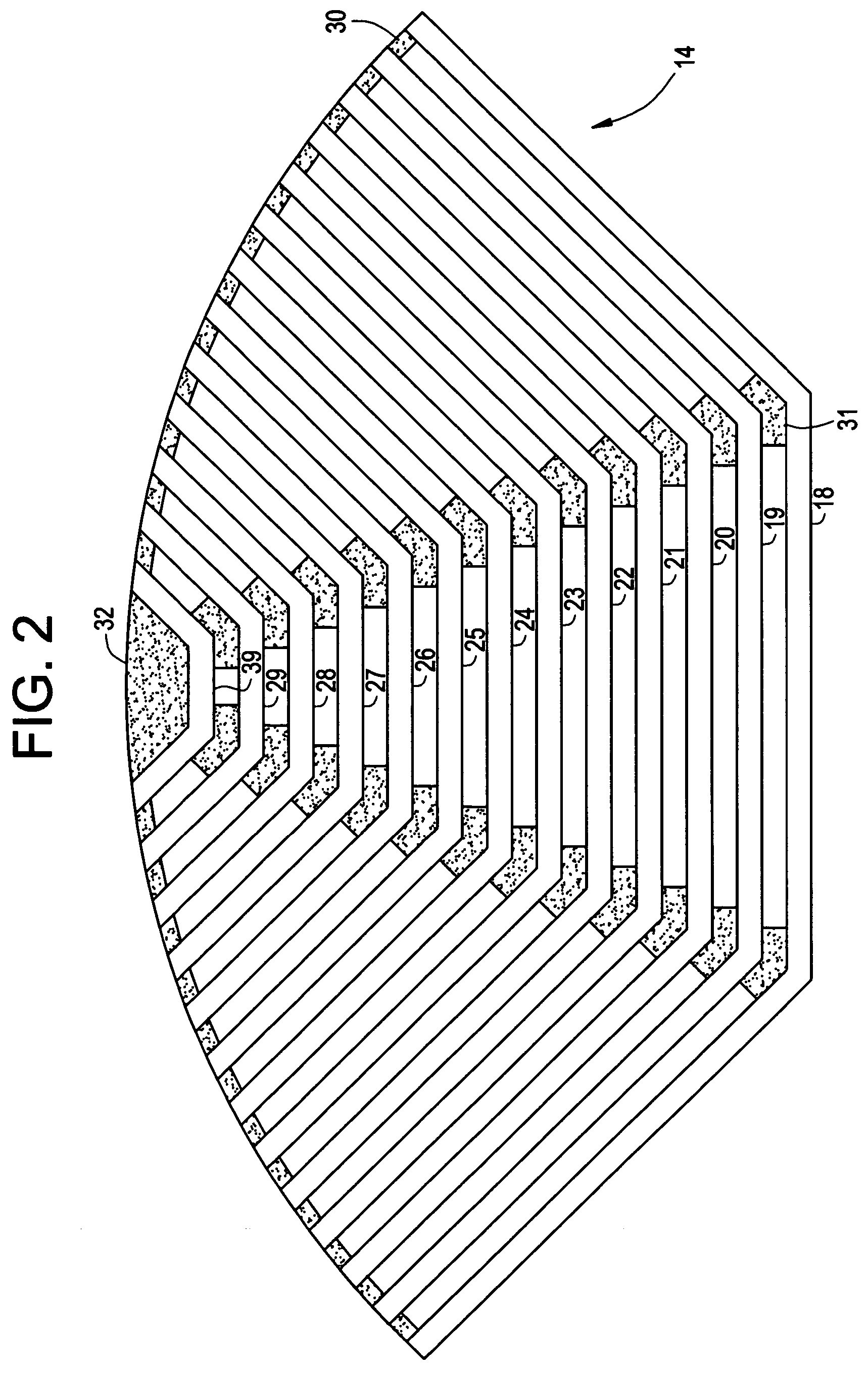Synchronous reluctance machine with a novel rotor topology
a synchronous reluctance machine and novel technology, applied in the direction of magnetic circuit rotating parts, cooling/ventilation arrangement, magnetic circuit shape/form/construction, etc., can solve the problem of mechanical and thermal limitations of existing synchronous reluctance machines, inherently significant core losses, and limited rotor dimensions for high-speed applications
- Summary
- Abstract
- Description
- Claims
- Application Information
AI Technical Summary
Benefits of technology
Problems solved by technology
Method used
Image
Examples
Embodiment Construction
[0015]The disclosed technology is a synchronous reluctance machine 10, FIG. 1 that has a selectively shaped rotor 12 and a stator 11. The stator 11 has a plurality of slots sized to receive armature windings. The selectively shaped rotor 12 of the synchronous reluctance machine 10 is configured in FIG. 1, as a four-pole machine 14, 15, 16 and 17. It is understood the synchronous reluctance machine 10 may, if desired, be configured with as many poles as desired. The configuration illustrated in FIG. 1, is for illustration purposes only. Each individual pole of the synchronous reluctance machine 10, FIG. 1, is of identical construction. For example, synchronous reluctance machine 10, FIG. 1, has four poles but for design reasons or performance requirements the synchronous reluctance machine may have six identical poles.
[0016]The exemplary pole 14, FIG. 2, is constructed from a plurality of axially extending radially positioned boat shaped laminated segments 18, 19, 20, 21, 22, 23, 24,...
PUM
 Login to View More
Login to View More Abstract
Description
Claims
Application Information
 Login to View More
Login to View More - R&D
- Intellectual Property
- Life Sciences
- Materials
- Tech Scout
- Unparalleled Data Quality
- Higher Quality Content
- 60% Fewer Hallucinations
Browse by: Latest US Patents, China's latest patents, Technical Efficacy Thesaurus, Application Domain, Technology Topic, Popular Technical Reports.
© 2025 PatSnap. All rights reserved.Legal|Privacy policy|Modern Slavery Act Transparency Statement|Sitemap|About US| Contact US: help@patsnap.com



